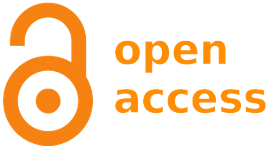Nutrition status and quantification of blood minerals by TXRF spectroscopy in vegetarian and non-vegetarian university students
Resumo
This study investigated whether university students following a vegetarian diet differed from non-vegetarian students in nutrient intake, biochemical, hematological and blood mineral profile of nutritionally relevant elements. In total, 107 students from a university, following either a non-vegetarian or a vegetarian diet for at least 1 year prior to the study, were recruited in two stages, setting up two experiments. Nutrient intake (experiment 1, n = 58), and biochemical and hematological parameters (experiment 2, n = 49) were evaluated. TXRF spectroscopy was used for determination of trace elements in whole blood. Vegetarians showed differences in nutrient intake, mainly higher consumption of unsaturated fatty acids and fiber. No significant differences in the biochemical and hematological parameters were found. The prevalence of abnormal parameters in a considerable number of vegetarians and non-vegetarians were found, mainly regarding high density lipoprotein (HDL-c) and total cholesterol (TC). TXRF spectroscopy proved to be a simple tool for determining nutrition-relevant elements (K, Fe, Cu and Zn) in blood samples. The high incidence of abnormal parameters, regardless of the dietary pattern, raises concern about the high prevalence of bad eating habits among young university students. Particularly for the vegetarian students, these results may partly counteract the beneficial lifestyle of a vegetarian diet evidenced by previous studies. It is important for students to be aware of its potential nutritional limitations. In this context, food and nutrition education programs in the academic context could contribute to set up autonomous and healthy subjects, regardless of the diet chosen.
Downloads
DECLARAÇÃO DE ORIGINALIDADE E DIREITOS AUTORAIS
Declaro que o presente artigo é original, não tendo sido submetido à publicação em qualquer outro periódico nacional ou internacional, quer seja em parte ou em sua totalidade.
Os direitos autorais pertencem exclusivamente aos autores. Os direitos de licenciamento utilizados pelo periódico é a licença Creative Commons Attribution 4.0 (CC BY 4.0): são permitidos o acompartilhamento (cópia e distribuição do material em qualqer meio ou formato) e adaptação (remix, transformação e criação de material a partir do conteúdo assim licenciado para quaisquer fins, inclusive comerciais.
Recomenda-se a leitura desse link para maiores informações sobre o tema: fornecimento de créditos e referências de forma correta, entre outros detalhes cruciais para uso adequado do material licenciado.























5.png)







